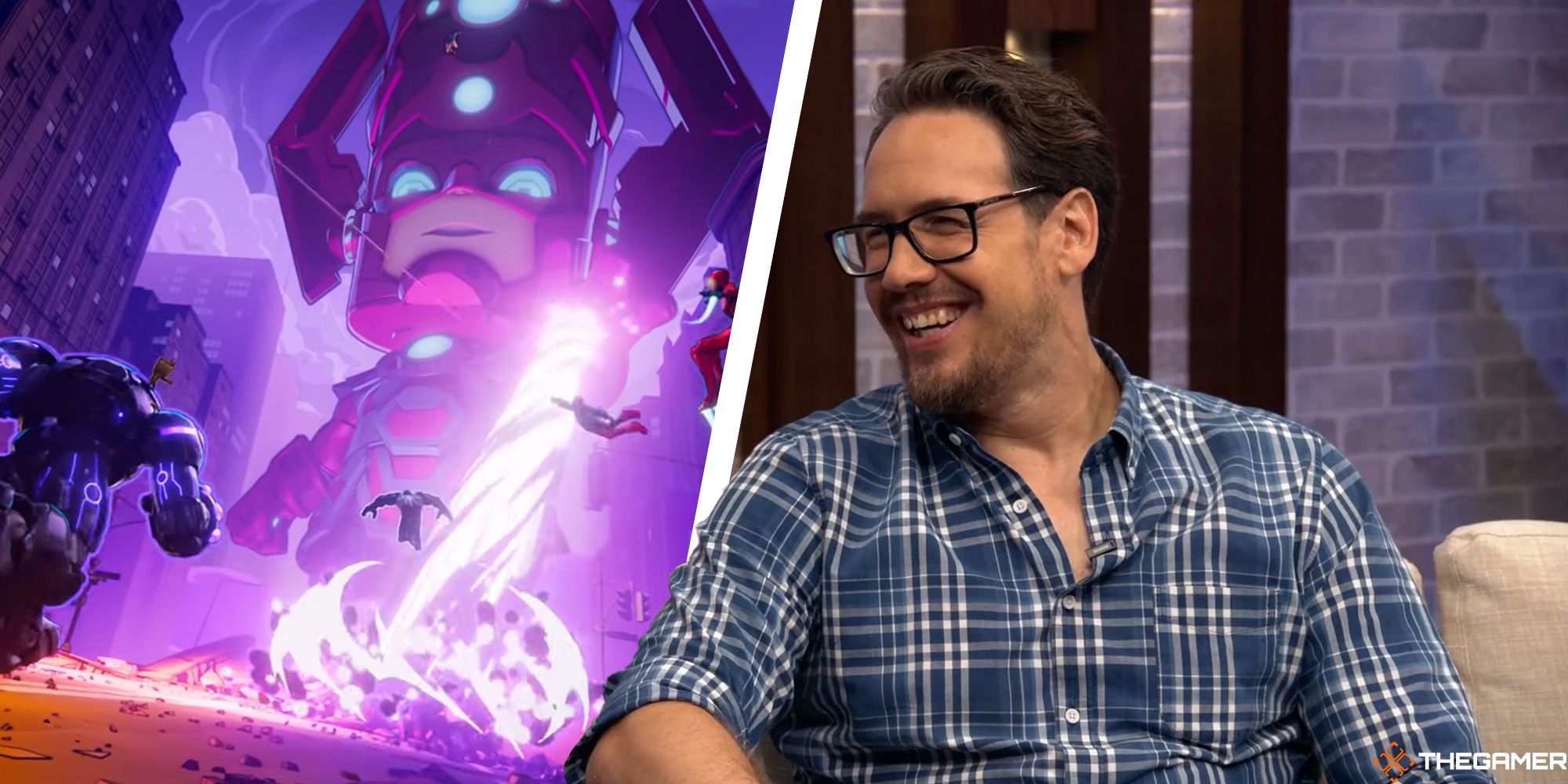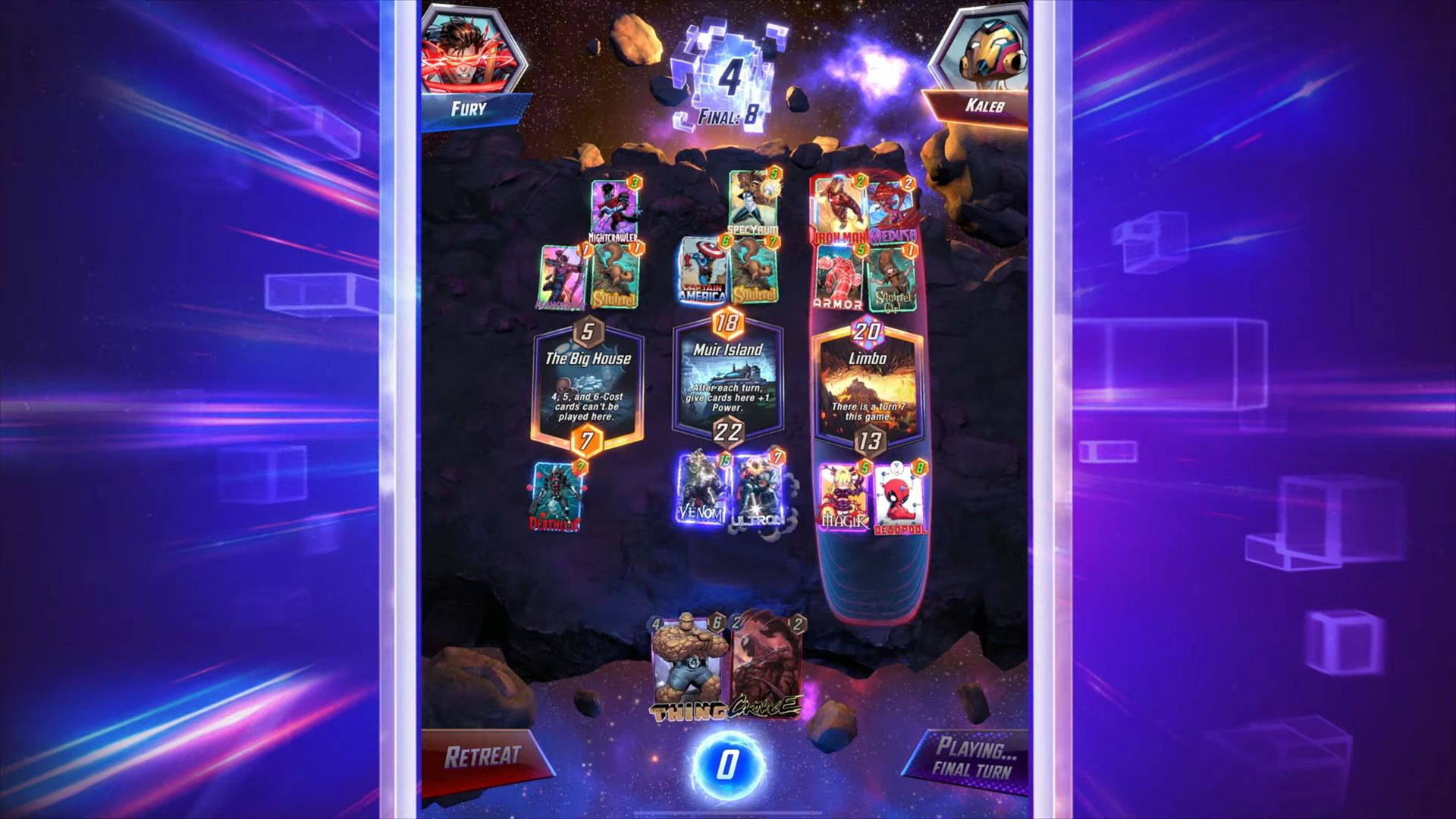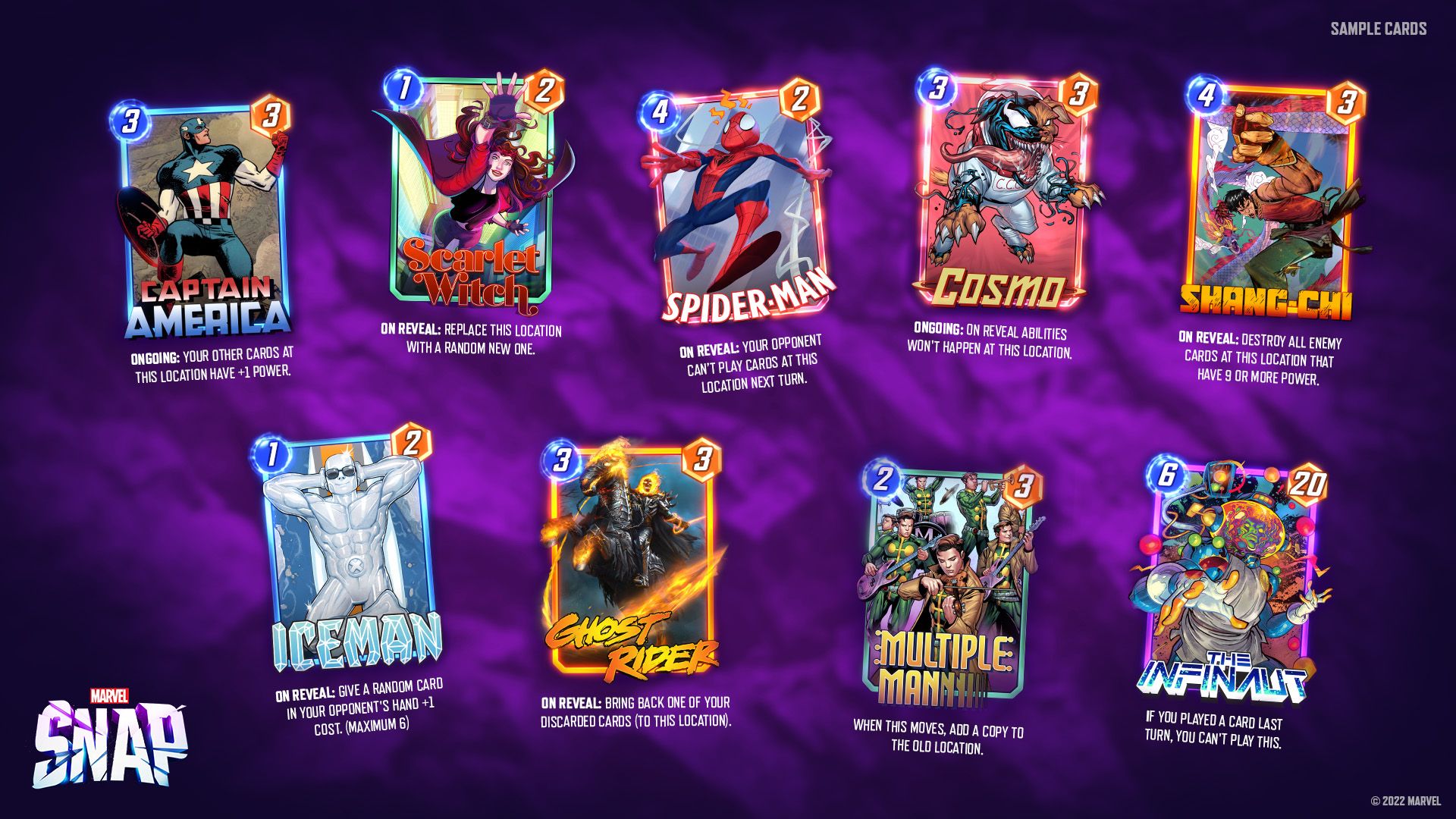Hearthstone director Ben Brode left Blizzard in 2018 because he wanted to get more hands-on with his games. “I was really, really happy at Blizzard,” Brode says. “I loved working on Hearthstone and I love the team, but I was doing mostly leadership and management stuff. I missed getting my hands dirty and making stuff.”
Together with former Hearthstone executive producer Hamilton Chu, Brode formed a new studio called Second Dinner and began looking for the right project. “The opportunity to work with Marvel came up because the guy that runs Marvel games used to work at Blizzard with me and Hamilton,” he says. “He took a chance on us and let us play in the Marvel Sandbox.
While Brode’s name is practically synonymous with collectible card games, Second Dinner didn’t specifically set out to create one. “We didn’t know if we were going to make a card game or something totally different, we had no idea,” Brode tells me. But as they started brainstorming concepts, it became clear that a CCG was the best fit. “[Marvel] isn’t about the races of the universe like I’m used to working with on Warcraft,” he explains. “It’s about the individuals. It’s about the heroes and villains that are super iconic. We gravitated towards making a digital collectible card game and focusing on that. There’s just one card type, which is the characters of the Marvel universe. That’s a huge focus of Marvel Snap.”
Marvel Snap is unlike any other card game out there. Decks consist of just 12 cards, games only last two minutes, and players take turns simultaneously. The play field is divided into three zones, each with their own unique conditions selected randomly at the start of each match. Snap is fast, chaotic, easy to learn yet deeply strategic, and totally different from the vast variety of other CCGs out there - including Hearthstone. Brode says that finding the perfect balance between simple rules and complex strategy was key. “As a designer I’m really passionate about what we call design elegance,” he explains. “You can add depth to a game very easily by adding more complexity. If you keep adding more complexity, you keep getting more depth. What’s elegant is when you achieve a high level of depth with a minimum amount of complexity. I wanted to have a game that was super deep but had the minimum amount of complexity so that anybody could come try it. It’s easy to play, [but you can] spend the next hundred thousand hours trying to master it.”
The best example of Marvel Snap’s elegant design is the titular Snap mechanic, which Brode credits Chu for conceiving. In each match, players are wagering two of their cosmic cubes, but at any point a player can ‘snap’ and double the bet. “You’re playing the game but you’re also thinking, do I want to double the stakes here? Do I want to take it to the next level?” Brode says. “Every turn of the game you’re trying to decide, should I bail? Should I stay in? It just adds so much depth to the experience, but not much complexity. That elegance is something we were really excited about.”
Another pivotal change from the traditional CCG model is that Marvel Snap has no booster packs to open, and there’s no way to craft or buy specific cards either. Players earn new cards by spending credits to enhance the visual effects of their cards - such as adding 3D and holographic effects - which in turn increases their Collection Level. As you further increase your level, new cards are added to your collection in a mostly-random order. This means that every player will have a different collection of cards and different decks they can build. “It really harkens back to the origins of collectible card games,” Brode explains. “There was no internet and access to cards was limited so you just kind of had to make do with what you had. Everybody was making their own decks and there was no net decking because there was no net. Marvel Snap brings us back to that time where you got what you got. Your collection is different from everyone else’s collection, you get to be creative in your own way, and you’re kind of forced to be creative.”
The collection system isn’t what players are used to. While most beta players, who have been testing the game for the past four months, have adapted and discovered the freedom it allows, there’s still some friction right now, particularly when you’re just a few cards away from unlocking the full potential of your deck. “There’s definitely some feelings of ‘I’m so close to a deck I’m really excited about, I just need this one card, where do I get it?” Brode admits. “I think we have a little bit of work to do [with that]. The journey is really fun and we don’t want players to skip past it, but I do think we can smooth the journey out a little bit to help players get one or two cards they really want.”
If you play long enough, you will eventually collect all the cards. As you progress on the Collection Level track, you start to receive new cards slower and more randomly. As of now, you have to climb to around CL 3000 to find every card. Of course, it only took the most dedicated players (and biggest spenders) about six weeks to do it. This wasn’t unexpected, according to Brode. Eventually, the majority of players will finish their collection too. Without your typical, filler-filled expansions, players will be able to earn cards much faster than Second Dinner can make new ones. Brode says there isn’t a new system in place for when that inevitably happens, but he knows it's important to give players something important to chase. “Something we’ve always believed about the game is that it’s really fun to have goals. That you’re looking into the future and [saying] ‘I can’t wait to unlock that card.’ We want to keep that going and we want to have more goals, but we haven’t talked about it yet. We have a lot more cards we want to make and a lot more cards we want to release, we’re figuring out plans for exactly how that should work.”
In July, a new way to acquire cards was introduced. During Nexus Events, players could spend gold, Marvel Snap’s premium currency, for a chance to receive credits, cosmetic items, and two new cards. The two cards introduced in the first Nexus Event, Destroyer and Jane Foster, The Mighty Thor, could only be earned through this loot box system at the time, and had an exceptionally low pull rate of only 1.5 percent. Players were furious with this system, which seemed to betray the studio’s promise that Marvel Snap would be fair and avoid pay-to-win systems. Two weeks after introducing Nexus Events, Second Dinner removed it from the shop, refunded everyone’s gold, and gave away the Jane Foster card for free. “It was a model we’ve seen in lots of other games,” Brode says. “But it was immediately obvious that it was not at all the right fit for this game and these players. [This is] one nice thing about being at a small studio. Big studios are big ships, and while it’s nice to be on a big ship sometimes because you can’t tell when there’s waves, it’s also hard to turn a big ship. With a small studio you can pivot super quickly.
“The stakeholders are all of us in this one room. We just said ‘Look, is this the game we want to make, or do we want to do something else? Everyone said the players are right, this is not it, let’s do something else. We moved as quickly as we could to rip it out and we got it out within two weeks. I feel good about that.”
Marvel Snap launches globally on October 18 during the game’s fifth monthly season. Brode says the team is working on multiple updates that are releasing soon, including balance changes and new content. Right now you can only queue up to play against random opponents, but the team is working on a way for players to match with their friends - a feature Brode says is necessary before they can start working on their version of a competitive mode and organized play. Marvel Snap is in a great place going into launch, the biggest challenge the studio faces now, according to Brode, is figuring out how to make their ambitions a reality. “We have huge dreams,” he says. “We have a lot of ideas for how we can continue to grow and expand the game. We’re kind of wading into some unknown water here. We’re going into a global launch for the first time for our first game as a studio. We want to be able to ramp up into that moment.
“We’re trying to find the right pace for our studio so that we make sure we meet the expectations of players who love the game and want to see more of it. [We want to] increase our pace and really get rolling. It’s a really exciting challenge for us because four years ago we were five people, later we were ten, now we’re at 55. We’re continuing to grow to support this humongous game.
“Launch is just the beginning,” Brode says. “We have a huge amount of plans that we’re really, really excited about.”



